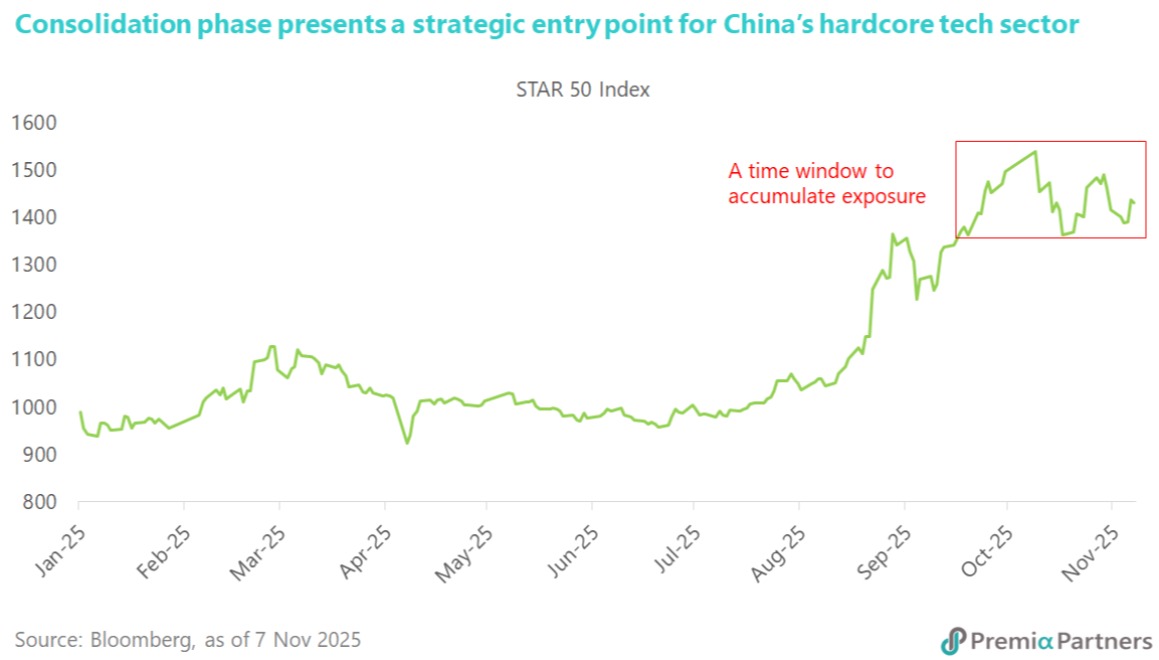
featured insights & webinar
China’s household consumption appears to have been massively underestimated in international comparisons, because of differences in data definitions and valuation methodologies. The two big areas of differences in international comparisons are: 1) Social transfers in kind, which could be worth some 6% of GDP; and 2) The value of housing services provided by owner-occupied homes, which could be worth another 5% of GDP. In this article, our Senior Advisor Say Boon Lim discusses why the criticisms of China’s growth model and "underconsumption" look flawed.
May 09, 2024
Despite mainland stocks putting up a solid Q1—the CSI 300 Index gained 3.1% for the quarter—and although macro fundamentals appeared as if they might be turning a corner at the start of 2024, bullish sentiment toward China equities had yet to materialize, with many questioning whether a first-quarter rebound would sustain. In the commentary below, Dr. Phillip Wool, Global Head of Research of Rayliant Global Advisors, delves into the details of China’s economy and market action during Q1, discussing how Beijing’s plan to nurture high-quality growth might translate to macro conditions and investors’ portfolios.
May 09, 2024
While investors would look at it as a period of crackdown on for profit tutoring businesses, since the “Double Reduction” policy (to reduce the pressures of homework and after-school tutoring) in 2021, young students indeed are able to spend more time on extracurricular activities that they enjoy. Given the size of addressable market, there has been a proliferation of various STEM (Science, Technology, Engineering, and Mathematics) learning, traditional culture and art-jamming activities in China, including many well-equipped new establishments fitted out with the latest digital technologies such as AI, 3D exhibitions and robotic guides, catering to various developmental needs and interests of children who now have more free time at hand they can deploy for more fun activities. Take the Guangdong province for example, there are 150 public libraries, 144 cultural centers, 352 museums, and 141 art museums built as of 2023 – and many of these are free of charge or charge very affordable fees available for both locals and visitors. In this article we share some of the popular ones that you may find of interest for your next trip to the region.
Mar 26, 2024
Consumer spending in China continues to grow strongly by international standards, even as the pattern of that spending evolves. The image of weak consumerism in China – as portrayed by the media – is misleading in two ways. For starters, the growth in retail sales in China is only “low” relative to the very high (mostly double digit) rates recorded in the 2010s. However, at 7.2% y/y growth in the full year 2023, China’s retail sales growth compares very well internationally. Beyond that, there are also changing social trends which are driving different forms of consumption in China, which then support investments that are more reflective of the transformation in China. In this article, we discuss more about how young Chinese are the main driving force in China’s consumer market and identify the winners of this quiet but significant sea change in consumer behaviour.
Mar 01, 2024
Extremely negative sentiment culminating Q4 2023 toward Chinese stocks have brought A shares to exceedingly low valuations for an economy with so much inherent growth potential, that it would appear the upside risks far outweigh the downside risks at this point. Meanwhile we see differentiating features of the bedrock and new economy indices including factors tilting toward bargain stocks and high-quality growth at a reasonable price, along with a concentration in strategic sectors that truly drive China’s real economy. In this article, Dr. Phillip Wool, Global Head of Research of Rayliant Global Advisors reviews the factor performance of the onshore A-shares markets in Q4 2023, and reasons why investors may look back at 2024 as a turning point for China’s equity markets, and outstanding entry point for a vintage well positioned for growth recovery in the new normal.
Feb 23, 2024
There is a big disconnect between the image of the Chinese economy portrayed by the media and the underlying data. As we start the year, we review key pieces of data from both China and the US. In summary, while the data for China has not been as good as the market may have liked, it was better than what the media would have had us believe. A quick run through the China data for the first nine months of the year, as collated by “China Briefing”: Growth in real GDP 5.2%; industry output 4.0%; services output 6.0%; retail sales 6.8%; fixed asset investment 3.1%. These are very decent growth figures by any international comparison. And China achieved the above figures with a smaller fiscal deficit than the US and while bearing the burden of rebalancing growth away from dependence on the property sector.
Jan 15, 2024
Global markets have hit extremes in sentiment – extreme exuberance towards the US and Japan and extreme pessimism about China. That sentiment has in part been driven by straight line projections of the cycle – the expectation that the US will continue its current path towards “Goldilocks” and Japan can sustain its currency depreciation-led earnings growth. The risks are that the cycle in the US transitions not to “Goldilocks” but to recession, and Japan’s Yen depreciation/reflation cycle cannot be sustained without dangerous inflation and ultimately government debt consequences. For China, the extreme in pessimism is predicated on the assumption that China cannot escape its cyclical weakness of the last 12 months, notwithstanding its ample policy “ammunition”.
Dec 18, 2023
Investors should expect a better return in Chinese equities in 2024 after three consecutive negative yearly return. Indeed, it is the first time that China stock market has recorded an annual loss three times in a row. Slowing economy, heighted China-US bilateral relationship, strong dollar and property market slump all contributed to the disappointing performance in the past twelve months. Looking ahead, the market may offer more upside risks because of (1) stronger supportive policies rolling out to help lift economic activities and particularly the property sector, (2) geopolitical tensions tuning down with increasing dialogues between Chinese and US top government officials, (3) domestic long-term investors’ buying and foreign investors’ current significantly underweight position in Chinese equities, and (4) value emerging from the discounted share prices on both absolute and relative basis. Bamboo is a symbol of longevity in China because of its durability, strength, flexibility, and resilience. It survives in the harshest conditions, persevere and still standing tall and staying green year-round. When the storm comes, bamboo bends with the wind. With business and consumer confidence continue to recover amid the much more accommodating, easing environment, Chinese entrepreneurs and the equities market should finally be in for a year of promising growth ahead.
Dec 18, 2023
Emerging ASEAN is one of the most compelling investment stories of 2024 – offering what is now an uncommon combination of growth and undervaluation. Having come to the end of its rate hiking cycle, with economic growth very much intact, Emerging ASEAN now benefits from tailwinds from a cyclical transition to stimulus amidst solid structural growth fundamentals. Vietnam in particular moved early and decisively in 2023 towards stimulus and its market is now favourably positioned with a PE to 2-year earnings CAGR ratio of only 0.36. In this article our Senior Advisor Say Boon Lim and Portfolio Manager Alex Chu discuss more about the fundamental growth drivers for this under-covered region, and how the end of the US rate hike cycle and the current valuation offer attractive opportunities for global and emerging markets allocators looking for uncorrelated alpha.
Dec 18, 2023
While many other economies have bounced back to trend growth, the latest IMF forecast shows that collectively the Emerging ASEAN-5 will likely have the strongest growth outlook among the major market/regional groupings. The IMF forecasts suggest that Emerging ASEAN-5 will likely grow its collective nominal GDP by 56% between 2022 and 2028, and will grow its nominal GDP from 72% of Japan’s GDP in 2022 to 92% by 2028. Their expected gain will be way ahead of those estimated for the Developed Market economies of the US, Euro Area and Japan. In this article, our Senior Advisor Say Boon Lim discusses the growth trajectory and drivers for opportunities in ASEAN, and why ASEAN is well placed to gain alpha while US is entering its final phase of the rate hike cycle.
Nov 20, 2023
BY TOPICS
Chart Of the Week


David Lai , CFA
CFA
Following the Xi–Trump meeting at the recent APEC Summit, market sentiment has turned cautiously optimistic on hopes of a renewed trade truce between China and the US. Some investors, however, view this détente as a sign that China’s drive for technological self-sufficiency could ease. Although the meeting did not address whether Nvidia’s latest Blackwell-series AI chips might be exported to China, speculation has risen that improving relations could lead to a relaxation of export restrictions — a development some perceive as negative for Chinese semiconductor and hardcore tech names. We take a different view. China’s determination to reduce reliance on imported technology remains firm. Recent initiatives, such as the reported requirement for state-funded data centers to adopt domestically produced chips, underscore the government’s resolve to build a self-sustaining semiconductor ecosystem. In mid-October, China Mobile also announced plans to construct the nation’s largest intelligent computing infrastructure by 2028, featuring a “100,000-GPU cluster” that will fully utilize domestic chips. Top Chinese officials have reiterated that innovation and advanced manufacturing remain core national priorities. These developments suggest that even if US export curbs were relaxed, China’s policy direction will continue to favor domestic research, production, and technological substitution. For investors looking to capture this structural growth opportunity, the Premia China STAR50 ETF provides an efficient and diversified vehicle. It offers focused exposure to leading STAR Market companies at the forefront of China’s innovation agenda — from semiconductors and AI to next-generation industrial technologies — positioning investors to benefit from the country’s ongoing technology upgrade.
Nov 10, 2025













